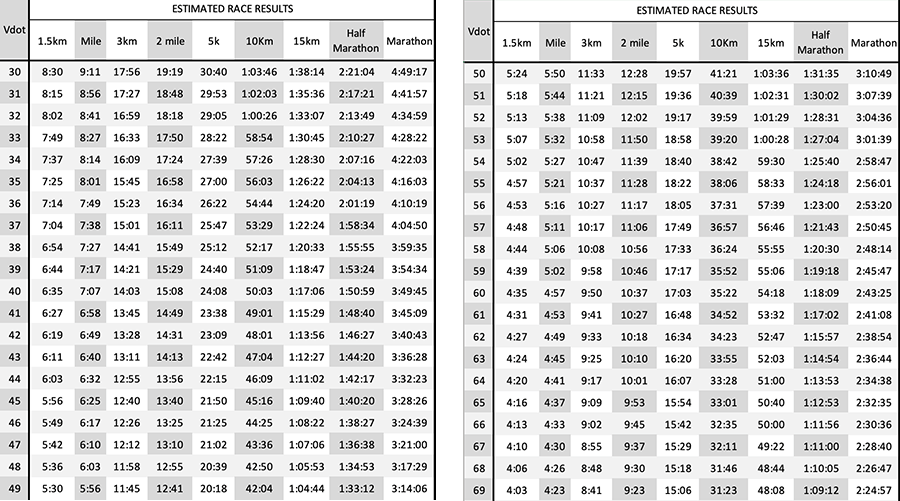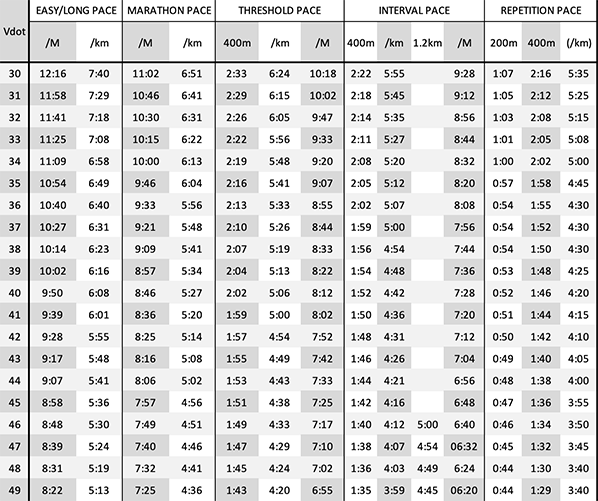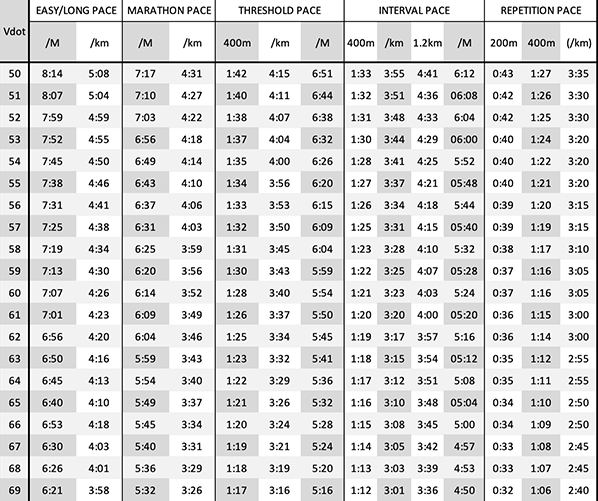Last year I burst into spring ready to run and walked out of summer injured and sidelined. At the time, I didn’t know why my body broke down. Shin splints, a groin strain, and sore hamstrings had me puzzled. Upon further research, my mistakes with training volume, run intensity, and ignoring previous injuries did it (How to Prevent Running Injuries and What I Did Wrong). I never had a real training plan to begin with. I was just trying to do more today than yesterday. And that didn’t work. That’s not what smart runners do. That’s not what elite athletes do. But I didn’t know any better. This year, I’ve spent most of March researching proper run programming and progression. I’ve planned out a year of running all based on VDOT values to correct my previous mistakes. So, what is VDOT? How can you determine your value? And how have I used this to schedule a year’s worth of runs? Well, let’s get into it!
What is VDOT?
Jack Daniels, who wrote the Daniel’s Running Formula, created the VDOT running program. He defines VDOT as your estimated VO₂ max while taking into consideration running economy and oxygen utilization. Simply put, VDOT is your current level of running fitness. The higher your VDOT, the fitter you are. But this value is important for determining your various training intensities. It dictates your running pace.
How to Determine Your VDOT
Daniels recommends using a recent race performance to determine your VDOT. Preferably, a race distance that’s closest to your running goals. For example, if you’re training for a marathon then a recent half marathon race is a better determinant than a 1-mile race. Personally, I’m planning on racing in a few 5k’s throughout the year. Therefore, I’ll use my recent 20-minute 5k race performance. From there, I’ll use Daniel’s VDOT chart to determine my value. Here we can see I have a VDOT of 50. This value can now be used to determine the intensity or pacing of my runs.

Run Pacing Based on VDOT
But first, there are five important run paces to understand in this program.
Now that I know my VDOT value (50) and understand the various training paces, I can determine my exact training paces. With a VDOT of 50, I can see my easy miles should be around an 8:14 mile. My threshold pace a 4:15 kilometer and so on. This has been a blessing for me when trying to determine workout intensity. This is partly where I struggled before. I didn’t know how hard to run my fast runs, or how slow to run my easy ones. Now, I have a plan for it.


My Training Plan for 2022
Lastly, I’ve picked one of Daniel’s running plans to begin my training. He offers four plans in his book for beginners, intermediates, advanced, and elites. Each of these plans has four progressive phases. And each phase is performed for four weeks of training. I decided to start this month with Phase 1 of his intermediate Red Plan. Below, you can see my first four weeks of training. I’m a couple of weeks into this plan already and love it.

The other part I struggled with last year was training progression and frequency. I didn’t know how much to up my miles each week. I didn’t know how many of my runs should be easy or difficult. And I didn’t know how much rest I needed. With this plan, I now have a much better idea. I should note that I’m using the Day 2 and Day 6 optional days for cross training. I bought a rowing machine a couple months ago that I’ll post on soon. Typically, I do an easy 30-minute row on those days. And on day 4, I repeat the day 1 running session so my training ends up looking like this:

Final Thoughts
I can’t tell you how excited I am to have a structured running plan for this year. Barring injury or unforeseen circumstances, I don’t see why I can’t complete all four of the intermediate phases by the end of July. Then I’ll move onto the advanced plan and keep it rolling. I have three 5k races I’m planning to do in May, July, and October. I’ll use those races to update my VDOT value and training paces too. I have no idea what I’ll be able to accomplish in the 5k this year. I’m at around 20 minutes now, but I’m hoping I can get down below 18 by year’s end. And not only have I revamped my running this year, but I’ve updated my stretching routine, increased my lifting volume, and added breathwork. So many exciting things that I can’t wait to share in the coming weeks. Just looking to do whatever I can to drop this 5k time. Can’t wait.

